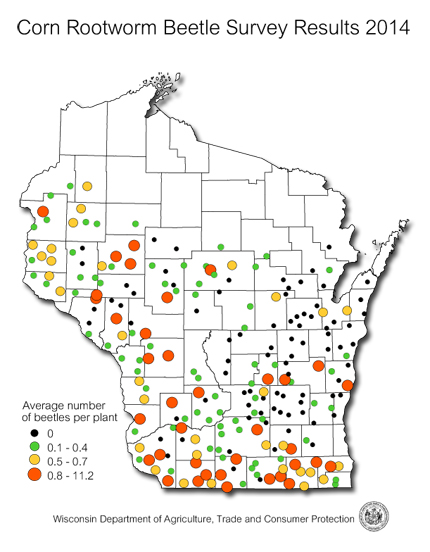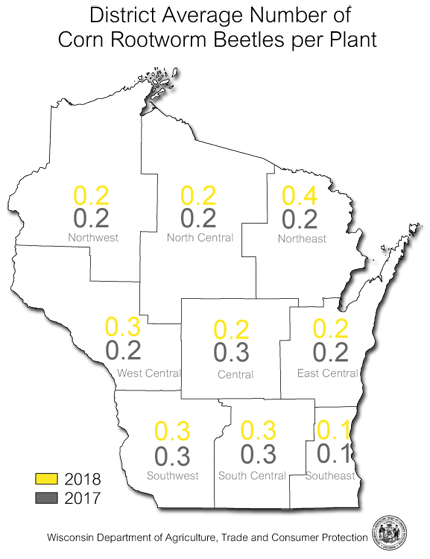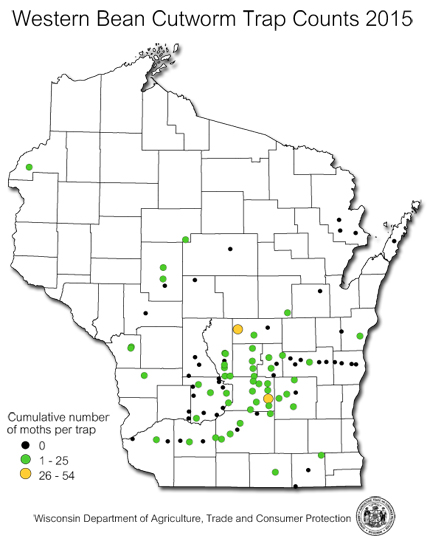
 |
|
|
Corn
Volume 59 Number 16 Date 08/21/2014 CORN ROOTWORM - Below are two maps summarizing the early findings of the 2014 corn rootworm beetle survey, completed in seven of the state's nine crop reporting districts. Surveys thus far have found a marked increase in beetle counts in the southwest and west-central areas as compared to 2013, while populations in the south-central, southeast, central, east-central and northeast districts are significantly lower than or equivalent to last season's averages. The preliminary state average of 0.5 beetle per plant is the same as in 2013. An average of 0.75 or more adult corn rootworms per plant (in continuous corn) indicates control in the form of crop rotation, using a Bt-rootworm hybrid or applying an at-planting soil insecticide should be considered to prevent root damage in 2015. Beetle populations exceeding this threshold have to date been noted in 30 of the 179 (17%) fields surveyed. WESTERN BEAN CUTWORM - Moth counts have declined to fewer than four per trap at all monitoring locations. As of August 20, the state total is only 502 moths in 103 traps (five per trap), a decrease from the 663 (six per trap) moths collected last season and the lowest state cumulative count since western bean cutworm trapping surveys began in 2005. The highest individual count for the eleven-week monitoring period was only 53 moths near Pine River in Waushara County. The record-low number of moths captured this season suggests larval populations are also very low, except in localized high-risk areas on sandy soils in Central Wisconsin. DATCP surveys this month have found only minor infestations affecting less than 2% of plants in a few Adams, Juneau, Marquette and Monroe County fields. At this late point in the growing season, larvae are feeding in the ear and nothing can be done to prevent kernel damage. Consultants and corn growers should plan to check fields before harvest to assess damage levels and the efficacy of their Cry 1F and Vip 3A hybrids. EUROPEAN CORN BORER - The treatment window for second generation larvae remains open for about one more week in southeast and central Wisconsin. Final inspections should be performed soon, before degree day accumulations surpass 2,100 (modified base 50°F) and the larvae begin boring into corn stalks. Due to the variability in corn borer development across the state, sweet corn growers are advised to inspect fields carefully and base control decisions on the specific conditions observed. An infestation involving an estimated 76% of corn plants was observed on August 19 in Pepin County, a few miles north of Mondovi. -- Krista Hamilton, DATCP Entomologist 





|
|
|